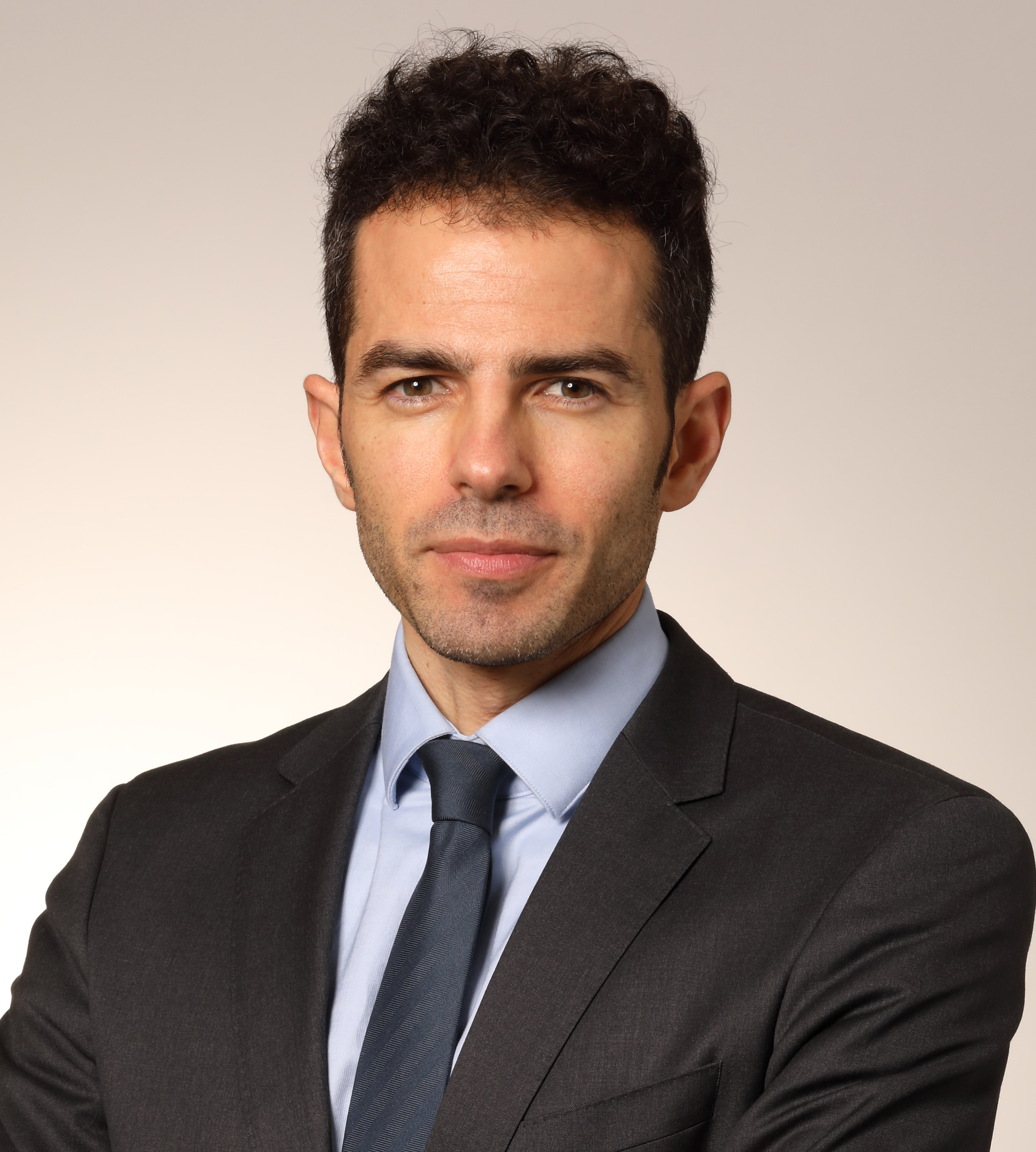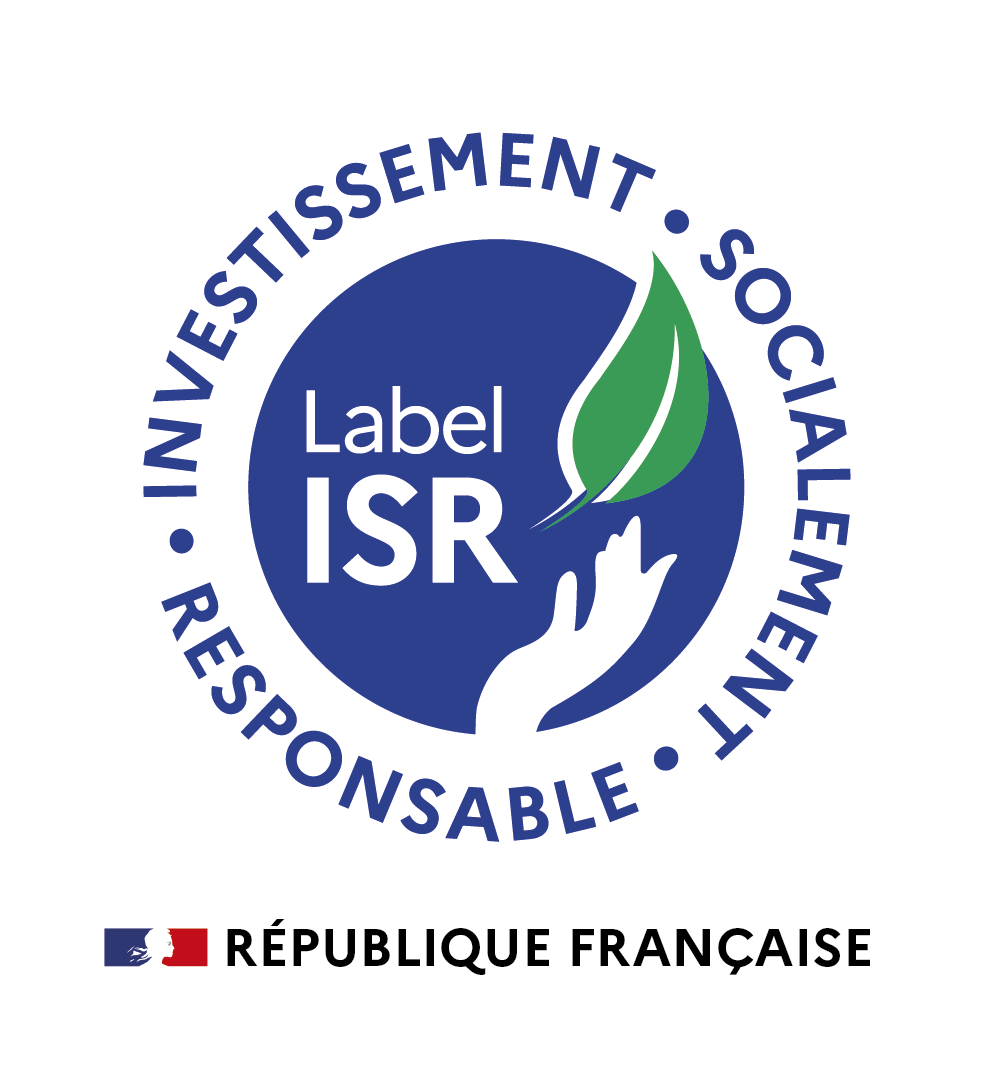

Candriam Sustainable Equity World
Fund details
“Sustainable Finance Disclosure Regulation” : Regulation 2019/2088 on sustainability-related disclosures in the financial services sector
Morningstar is an independent provider of investment analysis. The Morningstar rating is a quantitative assessment of the past performance of a fund taking into account the risk and the costs charged. It does not take into account qualitative elements and is calculated on the basis of a (mathematical) formula. The funds are ranked by category and compared to similar funds, based on their score and receive one to five stars. In each category, the top 10% receive 5 stars, the next 22.5% 4 stars, the following 35% 3 stars, the next 22.5% 2 stars, and the last 10% receive 1 star. The rating is calculated monthly based on historical performance over 3, 5 and 10 years and does not take into account the future. )
Morningstar launched the Morningstar Sustainability Rating (MSR) to help investors consider Environmental, Social and Corporate Governance (ESG) criteria when assessing their investments. Morningstar Sustainability globes are calculated using bottom-up assessments of the underlying securities of a portfolio, supported by the Sustainalytics methodology for assessing the ESG risk of companies and sovereigns. The Morningstar Sustainability Rating has several steps to accurately represent the relative risk within each portfolio. The result of the rating is a category of 1 to 5 “globes” for each eligible portfolio, indicating the fund’s ESG positioning relative to its peer group.
Marketing Communication. Please refer to the prospectus of the fund and to the key investor information document before making any investment decision. The documents can be obtained free of charge.
Risks
Definition
The summary risk indicator ("SRI") is an indicator with a rating ranging from 1 to 7 and corresponds to increasing levels of risk and return. The methodology for calculating this regulatory indicator is available in the KID.
The summary risk indicator ("SRI") is a guide to the level of risk of this product compared to other products.
It shows how likely it is that the product will lose money because of movements in the markets or because we are not able to pay you.;
The summary risk indicator ("SRI") is an indicator with a rating ranging from 1 to 7 and corresponds to increasing levels of risk and return. The methodology for calculating this regulatory indicator is available in the KID.<br>The summary risk indicator ("SRI") is a guide to the level of risk of this product compared to other products.<br> It shows how likely it is that the product will lose money because of movements in the markets or because we are not able to pay you.
Historical NAV
Candriam Sustainable Equity World
Historical NAV
MSCI World (Net Return)
C Dis
This graph represents the synthetic net asset value of the fund. It is provided for information and illustrative purposes only. The synthetic net asset value is obtained by a recalculation of the values of the fund’s assets by leveling out the effect of securities transactions (split, coupon, dividend distribution...) in order to reflect the real performance of the fund share or unit. Data may be rounded for convenience. Data expressed in a currency other than that of the investor's country of residence is subject to exchange rate fluctuations, with a positive or negative impact. Gross performance may be impacted by commissions, fees and other expenses.
Important information
© 2022 Morningstar. All Rights Reserved. The information contained here: (1) is proprietary to Morningstar and/or its content providers; (2) may not be copied or distributed; and (3) is not warranted to be accurate, complete or timely. Neither Morningstar nor its content providers are responsible for any damages or losses arising from any use of this information. Past performance is no guarantee of future results. For more detailed information about the Morningstar Rating, including its methodology, please go to: https://s21.q4cdn.com/198919461/files/doc_downloads/othe_disclosure_materials/MorningstarRatingforFunds.pdf
© 2022 Sustainalytics. All Rights Reserved. The information, data, analyses and opinions contained here: (1) includes the proprietary information of Sustainalytics; (2) may not be copied or redistributed except as specifically authorized; (3) do not constitute investment advice nor an endorsement of any product or project; (4) are provided solely for informational purposes; and (5) are not warranted to be complete, accurate or timely. Sustainalytics is not responsible for any trading decisions, damages or other losses related to it or its use. The use of the data is subject to conditions available at https://s21.q4cdn.com/198919461/files/doc_downloads/press_kits/2016/Morningstar-Sustainability-Rating-Methodology.pdf .
Legal documents
About this fund
Shares of companies with their registered office and/or their principal activities worldwide.
Investment strategy:
The fund seeks to achieve capital growth by investing in the principal assets traded and to ouperform the benchmark.
The investment process consists of two steps. Firstly, the eligible Environmental, Social and Governance (ESG) universe is defined using Candriam’s ESG proprietary analysis. Secondly, based on this universe, a portfolio is constructed taking into account several dimensions such as financial company fundamentals, ESG factors and risk metrics (liquidity, volatility, correlation etc.) using a quantitative investment framework. This framework enables the portfolio management team to compute expected returns and risks using mathematical models based on financial company fundamentals, ESG factors and risk metrics and to construct a portfolio taking into account these expected returns and risks as well as other criteria.The fund’s sustainable investment objective is to contribute to reducing greenhouse gas emissions through specific targets as well as the integration of climate related indicators in issuer and securities analysis. The fund also aims to have long-term positive impact on environment and social objectives. More specifically the fund aims to achieve overall greenhouse gas emissions at least 30% lower than those of the benchmark.
To achieve these objectives the fund implements a combination of positive selection of the best issuers based on ESG criteria, exclusion of issuers detrimental to these objectives or deemed to prone to controversies.
Issuers are subject to a two-pronged analysis considering how issuers activities contribute to achieving sustainable objectives on the one hand, and how issuers’ operations and policies align with the interests of their key stakeholders on the other hand.
The result of this analysis forms the basis to define the investable universe and guide fund managers in their portfolio construction.
This analysis is enriched by the results of dialogs led with issuers.
This investment approach will cause the fund to avoid certain issuers due to their poor ESG quality or contribution to attaining sustainability objectives. Whilst the manager believes that such issuers are likely to lose out to more sustainable ones over the long term, market volatility and short term market trends could result in such issuers outperforming more sustainable ones over shorter periods.
For further information, please refer to Candriam’s website and/or the prospectus.
The fund may use derivative products both for investment and hedging purposes (hedging against unfavourable future financial events).
Benchmark: MSCI World (Net Return).
The fund is actively managed and the investment approach implies a reference to a benchmark.
Benchmark definition: The index measures the performance of the large and mid-capitalization equity segment across developed markets countries.
Use of the benchmark:
- as investment universe. In general, the majority of the fund’s financial instruments are part of the benchmark. This said, investments outside this benchmark are admitted,
- in the determination of risk levels/parameters,
- for performance comparison.
- for performance fees calculation for certain share classes if applicable.
Deviation level of the portfolio composition from the benchmark:
The fund being managed actively, its objective is not to invest in all constituents of the benchmark, nor to invest to the same extent in the constituents of the benchmark. Under normal market conditions, the tracking error of the fund will be limited moderate to important this is comprised between 2% and 6%.
This measure is an estimation of the deviation of the fund’s performance compared to the performance of the benchmark. The more the tracking error is important, the more deviations compared to the benchmark are important. The effective tracking error depends notably on the market conditions (volatility and correlations between financial instruments) and can deviate from the expected tracking error.
Investment Team




Historical NAV
Historical NAV
Candriam Sustainable Equity World
Historical NAV
MSCI World (Net Return)
C Dis
This graph represents the synthetic net asset value of the fund. It is provided for information and illustrative purposes only. The synthetic net asset value is obtained by a recalculation of the values of the fund’s assets by leveling out the effect of securities transactions (split, coupon, dividend distribution...) in order to reflect the real performance of the fund share or unit. Data may be rounded for convenience. Data expressed in a currency other than that of the investor's country of residence is subject to exchange rate fluctuations, with a positive or negative impact. Gross performance may be impacted by commissions, fees and other expenses.
Cumulative Return
Past performance is not a reliable indicator of future performances. Markets could develop very differently in the future.
It can help you assess how the fund has been managed in the past.
| 1 Year | 3 Year | 5 Year | 10 Year | |
|---|---|---|---|---|
| Fund | 22.12 | 6.79 | 10.63 | 8.37 |
| Benchmark | 25.63 | 10.46 | 12.52 | 11.45 |
| Difference | -3.51 | -3.67 | -1.89 | -3.08 |
Additional information
The returns listed above are provided on the basis of the Net Asset Value (NAV), net of commissions and reinvested income. All management fees and commissions are included in the calculation of past performance except for any entry and exit charges. Taxes are not included in the calculation of returns. The value or price converted into euros may be reduced or increased depending on fluctuations in the exchange rate. The fund is not a guaranteed investment. The NAVs are net of fees and are provided by the accounting department and the benchmark by the official providers.
Market developments (currency conversion, coupon, split, …) have an influence on the chart. This graph is provided for information purposes only and does not precisely illustrate the evolution of the fund's net assets. Data may be rounded for convenience. Data expressed in a currency other than that of the investor's country of residence is subject to exchange rate fluctuations, with a positive or negative impact. Gross performance may be impacted by commissions, fees and other expenses
Annual return
This chart shows the fund’s performance as the percentage loss or gain per year over the last 10 years.
It can help you to assess how the fund has been managed in the past and compare it to its benchmark.
The index composition may change over time. The performance reported may therefore differ from the performance of the relevant index before its change. Performance is shown after deduction of ongoing charges. Any entry and exit charges are excluded from the calculation. Performances expressed in a currency other than that of the investor's country of residence are subject to exchange rate fluctuations, with a negative or positive impact on gains. If the present document refers to a specific tax treatment, such information depends on the individual situation of each investor and may change. If for one year, there is no performance information, it is because there is no data or the data is insufficient to provide investors with useful or reliable indications on this performance.
| 2014 | 2015 | 2016 | 2017 | 2018 | 2019 | 2020 | 2021 | 2022 | 2023 | |
|---|---|---|---|---|---|---|---|---|---|---|
| Fund | 14.76 % | 6.33 % | 7.06 % | 1.65 % | -6.53 % | 27.49 % | 7.20 % | 32.79 % | -16.98 % | 15.93 % |
| Benchmark | 19.50 % | 10.42 % | 10.73 % | 7.51 % | -4.11 % | 30.02 % | 6.33 % | 31.07 % | -12.78 % | 19.60 % |
| Difference | -4.74 % | -4.09 % | -3.66 % | -5.87 % | -2.43 % | -2.53 % | 0.87 % | 1.73 % | -4.21 % | -3.67 % |
Additional information
The returns listed above are provided on the basis of the Net Asset Value (NAV), net of commissions and reinvested income. All management fees and commissions are included in the calculation of past performance except for any entry and exit charges. Taxes are not included in the calculation of returns. The value or price converted into euros may be reduced or increased depending on fluctuations in the exchange rate. The fund is not a guaranteed investment. The NAVs are net of fees and are provided by the accounting department and the benchmark by the official providers.
Market developments (currency conversion, coupon, split, …) have an influence on the chart. This graph is provided for information purposes only and does not precisely illustrate the evolution of the fund's net assets. Data may be rounded for convenience. Data expressed in a currency other than that of the investor's country of residence is subject to exchange rate fluctuations, with a positive or negative impact. Gross performance may be impacted by commissions, fees and other expenses
Risk And Reward Indicators
Definition
The summary risk indicator ("SRI") is an indicator with a rating ranging from 1 to 7 and corresponds to increasing levels of risk and return. The methodology for calculating this regulatory indicator is available in the KID.<br>The summary risk indicator ("SRI") is a guide to the level of risk of this product compared to other products.<br> It shows how likely it is that the product will lose money because of movements in the markets or because we are not able to pay you.- SRI Date
- SRI Value
- 4
Main Risks
-
Currency risk
Funds may hold exposure to a currency different from its valuation currency. Changes in the exchange rate of this currency may negatively affect the value of assets in the portfolio.
-
Equity Risk
Some funds may be exposed to equity market risk through direct investment (through transferable securities and/or derivative products), meaning submitted to the positive or negative evolution of stock exchanges. These evolutions can be huge and be mainly driven by expectations relative to macro-economy and company results, speculation and irrational factors (including trends, opinions or rumours).
-
ESG Investment Risk
ESG investment risk refers to the risks arising from the inclusion of ESG factors in the management process, such as the exclusion of activities or issuers and the inclusion of sustainability risks in the selection and/or allocation of issuers in the portfolio.
-
Model risk
Fund management process relies on establishing a model which is used to identify signals based on past statistical results. Models full efficiency and internally developed strategies may represent a risk.
-
Risk of loss of capital
Investors are advised that any capital they invest is not guaranteed and that they may therefore not receive back the full amount invested. They may thus suffer a loss.
Other Risks
-
Counterparty Risk
When the fund carry out over-the-counter transactions (i.e. involving instruments not listed on the markets), they are exposed to a risk of default by the counterparty to the transaction.
-
Derivative risk
Derivatives are investments whose value depends on (or is derived from) the value of an underlying instrument, such as a security, asset, reference rate or index. Derivative strategies often involve leverage, which may exaggerate a loss, potentially causing the Sub-Fund to lose more money than it would have lost had it invested in the underlying instrument. Using derivatives may result in a higher portfolio volatility related to this underlying asset and an increase of the counterparty risk.
-
Liquidity risk
lt occurs when a portfolio position cannot be sold, liquidated or closed at a limited cost and within a sufficiently short time, which jeopardizing the fund's ability to comply at any time with its obligations to redeem the shares of investors at their request.
-
Sustainability Risk
The sustainability risk refers to any environmental, social or governance event or condition that could affect the performance and / or the reputation of issuers in the portfolio. It may be issuer specific, in line with their activities and practices, but may also be due to external factors.
Risk And Reward Indicators 30/9/24
- Alpha
-
-0.04
- Beta
-
1.05
- Information ratio
-
-1.52
- Sharpe Ratio
-
0.26
- Tracking error
-
2.52 %
- Volatility
-
15.13 %
- Price Earning Ratio
-
22.03 %
- Price to Book Value
-
2.71 %
- ROE
-
18.08 %
- Equity exposure
-
99.73 %
- Dividend Yield
-
1.94 %
- Active share
-
68.20 %
- Number of Issues
-
181
This is the portfolio partial view
Labels
 ISR
ISR
-
80%
Min sustainable investments rate -
0%
Min sustainable investments environmental rate -
0%
Min sustainable investments social rate
Fund Characteristics
- Fund name
- Candriam Sustainable Equity World
- Benchmark
- MSCI World (Net Return)
- Share Class
- C - Dis
- SICAV Name
- Candriam Sustainable
- Currency
- EUR
- Legal Form
- Sub-fund of a SICAV under Luxembourg law
- Legal status
- UCITS
- SFDR Category
- Article 9
- Creation Date
- Closing date
- The fund has no limited term
- Domicile Country
- Luxembourg
- First NAV Date
- 23/3/17
- Bloomberg ticker
- CSEWCDE LX Equity
- Morningstar ticker
- F00000YSYH
- Management company, having its registered office in Luxembourg
- CANDRIAM, management Company having its registered office in Luxembourg.
- Depository bank
- CACEIS Bank, Luxembourg Branch
- Transfer agent
- CACEIS Bank, Luxembourg Branch
- Recommended investment horizon
- 6 years
- Anti Dilution system
- yes
- ISIN
- LU1434527518
- Marketing authorization
- Austria; Belgium; France; Germany; Italy; Luxembourg; Portugal; Spain; Switzerland
Swing Pricing is a mechanism by which the net asset value is adjusted upwards (or downwards) if the change in liabilities is positive (or negative) in such a way as to reduce for existing investors the portfolio restructuring costs linked to subscription/ redemption movements in the fund. On valuation days where the difference between the amount of subscriptions and the amount of redemptions of a sub-fund (i.e. net transactions) exceeds a threshold set beforehand by the Board of Directors, the latter shall be entitled to:
- value the net asset value by adding to the assets (in the case of net subscriptions) or deducting from assets (at net redemptions) a fixed percentage of the fees corresponding to market practices and reflecting the fees and/or conditions of liquidity when buying or selling securities;
- value the securities portfolio on the basis of bid or ask prices;
- assess the net asset value by setting a level of spreads representative of the relevant market;
- The dilution mechanism must not exceed 2% of the net asset value, except in exceptional circumstances, as in the event of a sharp decrease in liquidity, which would then be detailed for the sub-fund concerned in the annual (semi-) annual report of the SICAV.
Tax, Charges & Fees
- Management fees (max)
- 1.50 %
- Subscription
- 3.50 %
- Redemption
- 0.00 %
- Ogc date
- Last ogc
- 1.93 %
Orders
- NAV date
- D
- NAV calculation Day
- D+1
- Frequency valuation
- daily
- Subscription cut off
- D 12:00
- Redemption cut off
- D 12:00
ESG documents
Download all ESG documentsShareholder Documents
Download all shareholder documentsAnnual and semi-annual reports
Download all annual documentsFactsheet and Fund Comments
Download all fact sheet documentsAwards
Other information
This is a marketing communication. Please refer to the prospectus of the funds and to the key information document before making any investment decision. This marketing communication does not constitute an offer to buy or sell financial instruments, nor does it represent an investment recommendation or confirm any kind of transaction, except where expressly agreed. Although Candriam selects carefully the data and sources within this document, errors or omissions cannot be excluded a priori. Candriam cannot be held liable for any direct or indirect losses as a result of the use of this document. The intellectual property rights of Candriam must be respected at all times, contents of this document may not be reproduced without prior written approval.
Warning: Past performance of a given financial instrument or index or an investment service or strategy, or simulations of past performance, or forecasts of future performance does not predict future returns. Gross performances may be impacted by commissions, fees and other expenses. Performances expressed in a currency other than that of the investor's country of residence are subject to exchange rate fluctuations, with a negative or positive impact on gains. If the present document refers to a specific tax treatment, such information depends on the individual situation of each investor and may change.
In respect to money market funds, please be aware that an investment in a fund is different from an investment in deposits and that the investment’s principal is capable of fluctuation. The fund does not rely on external support for guaranteeing its liquidity or stabilizing its NAV per unit or share. The risk of loss of the principal is borne by the investor.
Candriam consistently recommends investors to consult via our website https://www.candriam.com the key information document, prospectus, and all other relevant information prior to investing in one of our funds, including the net asset value (“NAV) of the funds. Investor rights and complaints procedure, are accessible on Candriam’s dedicated regulatory webpages https://www.candriam.com/en/professional/legal-information/regulatory-information/. This information is available either in English or in local languages for each country where the fund’s marketing is approved.
According to the applicable laws and regulations, Candriam may decide to terminate the arrangements made for the marketing of a relevant fund at any time.
Information on sustainability-related aspects: the information on sustainability-related aspects contained in this communication are available on Candriam webpage https://www.candriam.com/en/professional/sfdr/. The decision to invest in the promoted product should take into account all the characteristics or objectives of the promoted product as described in its prospectus, or in the information documents which are to be disclosed to investors in accordance with the applicable law.Specific information for investors in France: the appointed representative and paying agent in France is CACEIS Bank, Luxembourg Branch, sis 1-3, place Valhubert, 75013 Paris, France. The prospectus, the key investor information, the articles of association or as applicable the management rules as well as the annual and semi-annual reports, each in paper form, are made available free of charge at the representative and paying agent in France.
ESG Assessment
This fund has a sustainable investment objective. It invests in economic activities contributing to an environmental and/or social objective. To achieve this objective, the management team makes discretionary investment choices based on an economic/financial analysis process and an internal analysis of environmental, social and governance (ESG) criteria.
a. ESG selection criteria:
For corporates, the internal analysis of ESG criteria consists in selecting the issuers:
• that are the best positioned to meet the challenges of sustainable development;
• that comply with the principles of the United Nations Global Compact (i.e. human rights, labour law, the environment, anti-corruption), and which are therefore less exposed to the risks associated with these themes; and
• that are not engaged in controversial activities such as armament (securities of a company whose activity consists of manufacturing, the use or possession of anti-personnel mines, cluster bombs and/or depleted uranium weapons), tobacco, thermal coal.
For sovereign issuers, the internal analysis of ESG criteria consists in selecting:
• Countries that perform best across our four categories of sustainable development criteria: Human Capital, Natural Capital, Social Capital and Economic Capital;
• Countries that are not part of our highly Oppressive Regimes or dictatorships, based on the Freedom House Freedom in the World Index and the World Bank Voice & Accountability Index.
b. Selection methodology:
The companies selected by the management company are subject to a dual analysis:
• Analysis of their activity to assess their alignment with the major challenges of sustainable development. For example, regarding the transition to a circular economy, the management company will consider a company producing recycled steel to be more sustainable than a company producing steel exclusively from iron ore; and
• Analysis of how the company manages players interacting with the company: its employees, its customers, its shareholders, its suppliers and the environment. Here too, the management company will favour companies that adopt the most sustainable practices given their sector. For example, with regard to relations with its clients, the management company will favour pharmaceutical companies with balanced pricing practices and commercial policies. Similarly, with regard to relations with their employees, the management company attaches great importance to the fight against discrimination and compliance with social standards.
Our sovereign investible universe consists of those countries which perform best across our four categories of sustainable development criteria:
• Natural Capital: stock of naturel resources managed by the country;
• Social Capital: trust, norms and institutions which people can rely on to solve common problems and create social cohesion;
• Human Capital: human productivity to which the country participates through education and other initiatives;
• Economic Capital: assessing the level of economic activity viability.
c. A team of ESG analysts is responsible for assessing the selection criteria:
The analysis and selection of sustainable investments is carried out by a dedicated team of ESG analysts within Candriam. This team is made up of specialists whose mission is to analyse the exposure of companies and governments to the risks and opportunities associated with sustainable development.
Selection criteria are expected to evolve over time, based on advances in ESG research and changes in company practices.